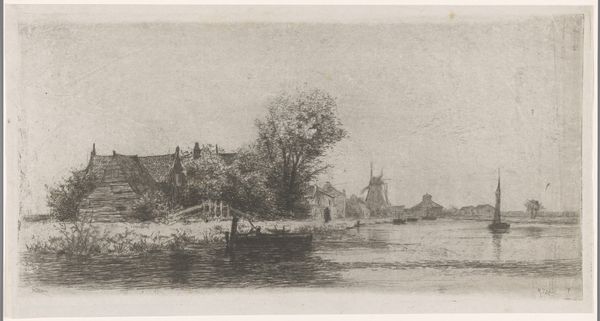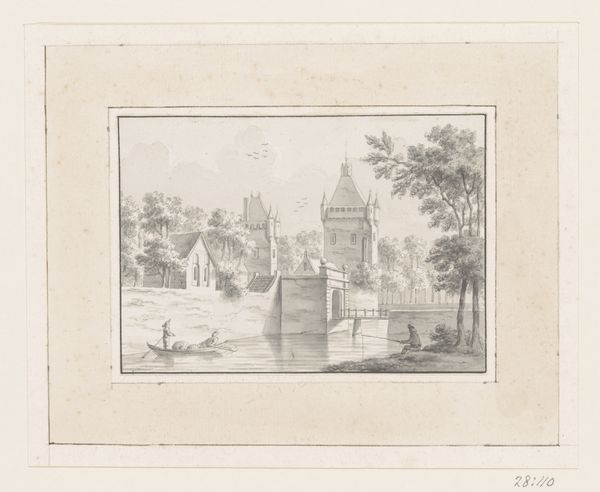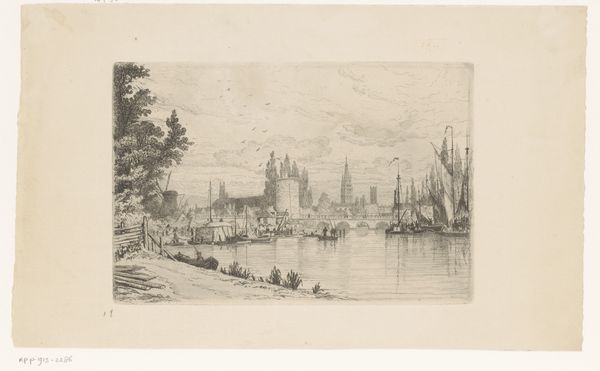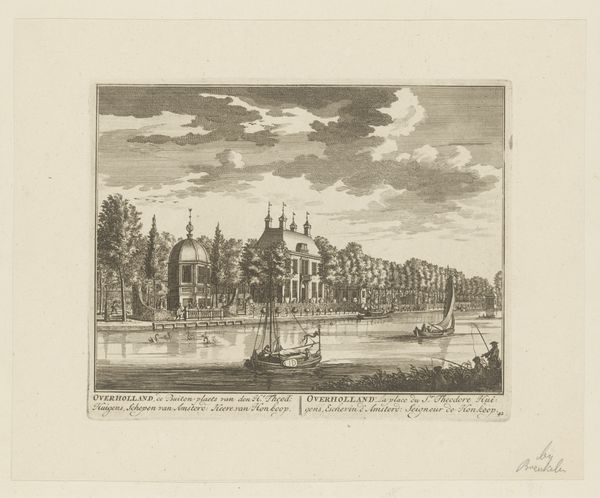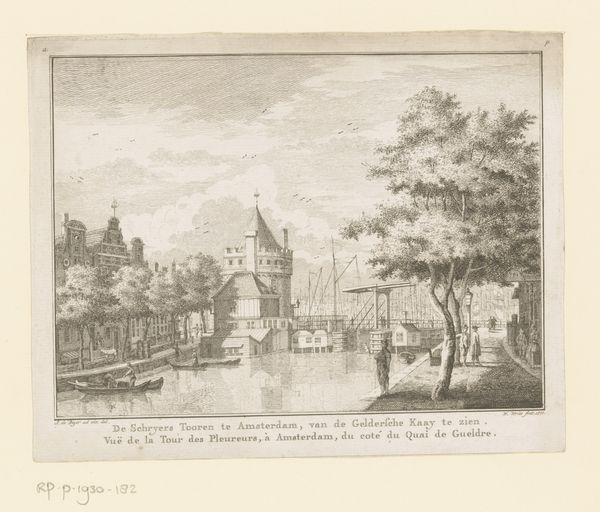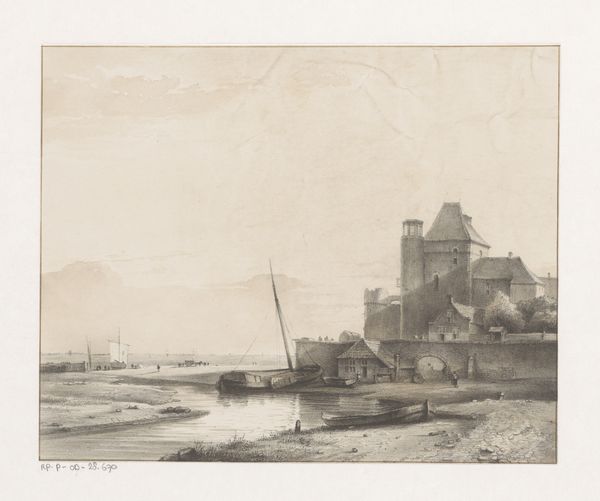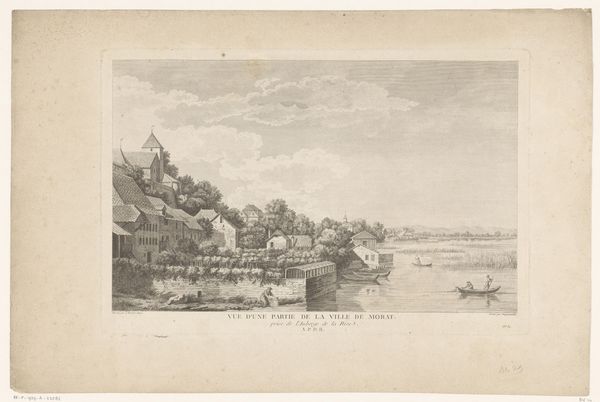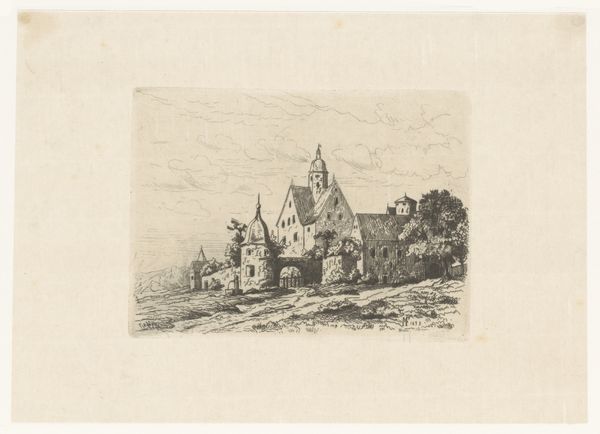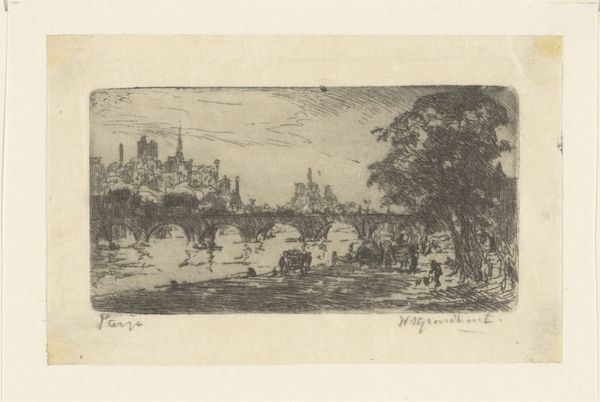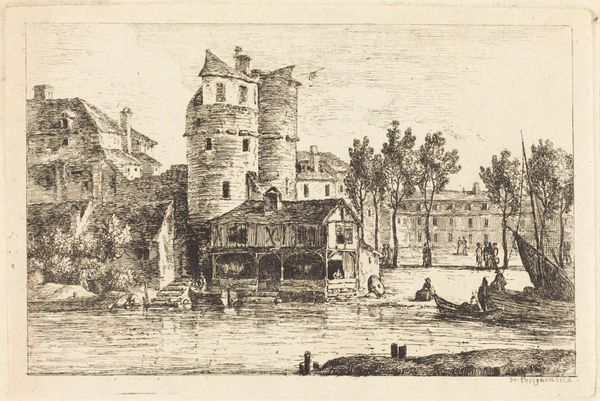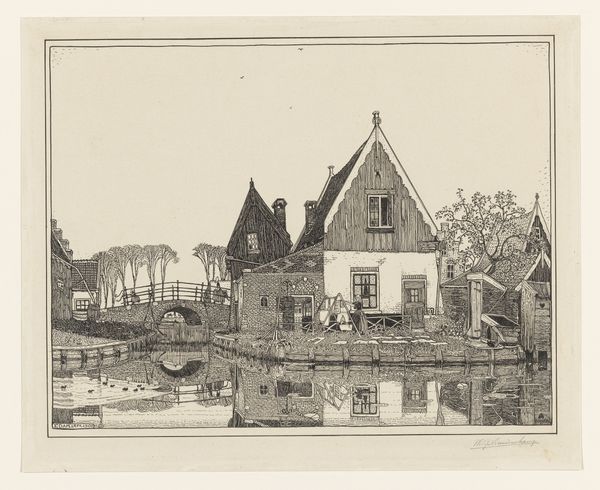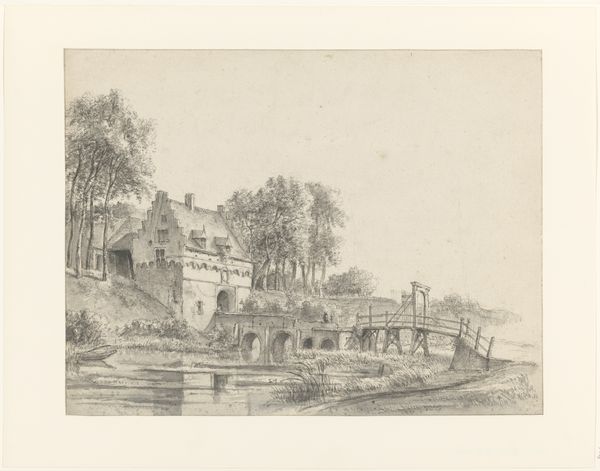
print, etching
# print
#
etching
#
landscape
#
etching
#
cityscape
#
realism
Dimensions: height 240 mm, width 315 mm
Copyright: Rijks Museum: Open Domain
Curator: Looking at this etching, "Castle Tower and Houses by the Water," attributed to Everhardus Koster and created circa 1847-1863, I’m immediately struck by the serene atmosphere, a sort of dreamy quality evoked through the soft gradations of light and shadow. Editor: It's a competent rendition of a placid town scene. However, I'm far more intrigued by the process itself—the way Koster has skillfully employed etching to create the varying textures that define each element. It speaks to a sophisticated printmaking practice, and its availability hints at the distribution networks for art in mid-19th century Netherlands. Curator: The composition certainly contributes to the feeling. The placement of the buildings, reflected so perfectly in the water, creates a mirroring effect. The eye is drawn to the tall tower, establishing a vertical anchor in an otherwise horizontal layout. Editor: Yes, but beyond formal compositional qualities, consider the labor. Etching demands planning, skill, and time. Furthermore, who were Koster’s patrons? Was he working independently or for a print shop catering to a burgeoning middle class hungry for affordable landscapes? These questions are critical in understanding the work’s place in society. Curator: I appreciate that perspective. And it certainly makes you consider the audience that was buying these kinds of landscapes, compared to oil paintings. The detail is still remarkable for the medium, capturing both architectural precision and organic elements, like the trees. The use of line work to simulate depth and texture is masterful. Editor: Right, the materiality of printmaking also dictated accessibility. How many impressions were made? Were there variations across editions suggesting different phases of the production process or shifting demands? It's a delicate scene on the surface, but a detailed material examination reveals so much more. Curator: In terms of our viewing experience, though, I still find this etching fascinating. I do like pondering those questions about materiality, patronage and context. Thanks for drawing my attention there! Editor: And I must say, your pointing out its technical sophistication encourages a richer, more contextual understanding. So it is always with a focused conversation around art.
Comments
No comments
Be the first to comment and join the conversation on the ultimate creative platform.
